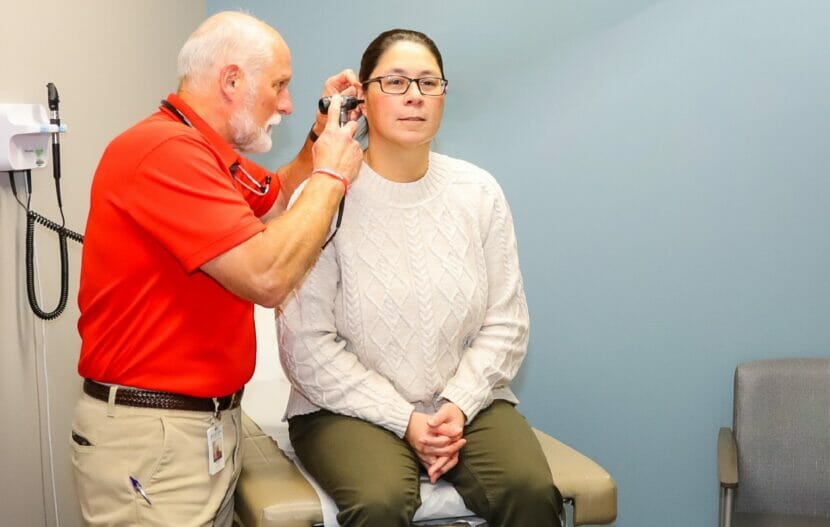
The Alaska State Medical Board is rewriting the regulations that govern how physician assistants, or PAs, practice in the state. At a recent hearing about the changes that was open to the public, over 30 people testified. All of them spoke out against the proposed regulations.
John Western, a PA who works on Alaska’s North Slope, said the regulations would create unnecessary barriers and restrictions.
“There’s a critical shortage of providers, and the patients will be sick and suffer and die because it’ll be a shortage of PAs,” Western said.
Those speaking out against the regulations included PAs, physicians and health care administrators. Many expressed outrage and fear over what the regulations could mean for health care in Alaska.
The proposed regulations would increase the amount of directly supervised hours required before PAs could work in a remote area — from 160 to 2,400. That’s about 14 months of training that would have to take place in an urban area. And the way the regulations are written, a remote location is most of the state beyond Anchorage.
Teresa Lowe, a physician assistant and campus coordinator for the University of Washington’s PA training program in Alaska, lives in Anchorage, but grew up in Mountain Village. She’s afraid the new regulations will turn PAs away from rural areas.
“This could drastically reduce the amount of interest people have in moving into remote areas,” Lowe said. “It is completely devastating for the potential that we have — because there are so many people that are willing and have so much excitement to go out to rural Alaska. But in 14 months, so much can change.”
Physician assistants can diagnose and treat patients and must be supervised by a physician. Their education usually includes three years of school and hands-on training.
Lowe said even with more than a decade of experience, if she wanted to return to clinical work under the proposed regulations, she would need those 14 months of training again. She said that’s true of PAs who want to change their specialty too, something she’s done a lot during her career.
“One of the things that is so beneficial about being a PA is that you can change,” Lowe said. “I’ve been a forensic examiner for our sexual assault response team. I’m teaching now. I’ve worked in occupational medicine, urgent care. I have this wide variety of experience.”
Another proposed change would mean PAs could only practice within the experience of their supervising doctor, even if they have other expertise or training. So, if a PA had training from working with an OBGYN or had experience working as an EMT, but their current doctor didn’t have those skills, they couldn’t use that knowledge to treat patients anymore — even in an emergency situation.
Members of the Alaska State Medical Board declined to answer even basic questions on the proposal because the regulations are open for public comment through Oct. 3. In a short emailed statement, the state department that oversees the board said, “The project took two years to complete and the proposed changes currently out for public comment are the outcome of that process.”
But at least three large health care associations in Alaska are critical of the proposal as it’s written.
Jared Kosin, president and CEO of the Alaska Hospital and Healthcare Association, said PAs are on the frontlines providing rural healthcare and the changes could spell disaster for rural residents.
“We would brace ourselves for a massive disruption because you’d essentially be taking people off the line and making it significantly harder and more time intensive to get people who have been qualified all the way up to this point,” said Kosin.
Nationally, there is a push to streamline regulations of PAs to increase independence. But Kosin said Alaska tends to be more conservative than other states and these regulations appear to restrict independence, not increase it.
The Alaska State Medical Association, which primarily represents physicians in the state, helped draft an earlier version of the regulations. Its executive director, Pam Ventgen, said some of the changes are necessary. They’re meant to ensure that PAs have enough on-the-job experience before they practice on their own in a rural area and to ensure PAs can ask questions of someone who has expertise in that subject area. But she said the association doesn’t support the changes in their current form. She said one big thing that’s missing from the regulations is flexibility.
“If a community health aide practiced for 10 years as a community health aide, went to PA school and graduated and wanted to return to their village to practice now as a PA, that makes total sense to me,” said Ventgen.
And Ventgen said it’s important that the regulations be rewritten to allow a PA to use their entire skill set in an emergency. She gives the example of a patient who goes into labor when a PA is the only healthcare worker around with OBGYN experience.
“In an emergency, that’s better than nothing,” said Ventgen. “It’s better than the taxi driver in the parking lot, and so there needs to be some reason in this picture.”
The board will consider the changes at their quarterly meeting Nov. 17. If they pass in their current form, the regulations could go into effect in as little as thirty days.